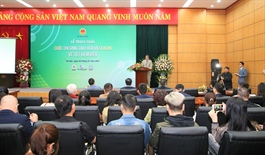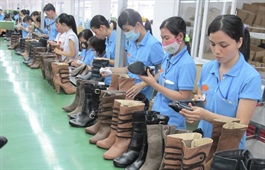Seminar talks up Polish market potential for Vietnamese exports
Seminar talks up Polish market potential for Vietnamese exports
Poland is a promising export market for Vietnamese goods, especially with the EU-Viet Nam Free Trade Agreement taking effect last year, experts have said.

Speaking at the seminar on exports to the EU in HCM City last week, Tran Phu Lu, deputy director of the HCM City Investment and Trade Promotion Centre (ITPC), said: “With a population of more than 38 million, Poland has a young and highly skilled workforce, good infrastructure, friendly business environment, and strong economic growth prospects, and provides great access to the promising 500-million EU market.”
Since joining the EU in 2004, the country had achieved great results in terms of economic reforms, improving business climate and accelerating economic growth, he said.
According to the figures from the World Bank, Poland’s GDP in 2019 was US$596 billion, making it the 10th largest economy in the EU. Its economy grew at more than 4 per cent a year in 2014 - 19 period, driven by strong domestic demand, consumer confidence and a vibrant labour market, though in 2020 GDP was forecast to decline by 4.25 per cent due to the impact of the Covid-19 pandemic.
According to the World Trade Organization, Poland is the 23rd largest exporter and 20th largest importer in the world.
Its main export markets are Germany, the Czech Republic, France, Italy, the Netherlands, Russia, and the US, and it imports mainly from the EU, China, Russia, the US, and the UK.
Last year Viet Nam’s trade with Poland was worth $2.115 billion, up 17.6 per cent from 2019 despite the Covid-19 pandemic, with exports accounting for almost $1.77 billion.
Piotr Harasimowicz, head of the Polish Investment and Trade Agency office in HCM City, said Viet Nam was the 19th largest exporter of goods to Poland with the major items being computers, electronics and spare parts, garments and textiles, coffee, and footwear.
The EVFTA, which took effect in August last year, offers opportunities to boost bilateral trade, he said.
“Under the EVFTA 71 per cent of tariffs are immediately removed by the EU on Vietnamese exports and the rest will be removed within seven years, which will help Vietnamese goods conquer the EU market, especially the Polish market.”
Dang Thai Thien of the city Department of Customs said Vietnamese firms needed to improve in terms of quarantine and food safety, technical barriers, origin of goods, the Voluntary Partnership Agreement on Forest Law Enforcement, Governance and Trade (VPA/FLEGT), and the Convention on International Trade in Endangered Species of Wild Fauna and Flora (CITES), and those related to illegal, unreported, and unregulated fishing if they want to export to the EU.
Experts said fisheries businesses needed to pay close attention to illegal, unreported, and unregulated fishing regulations.


























